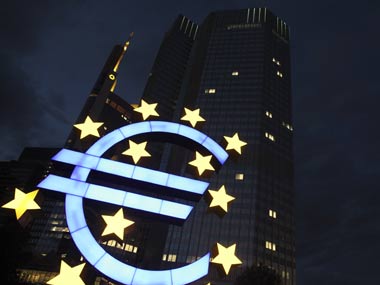The markets were expecting the event and, to a large extent, forced the event. The possibility of a Greek sovereign debt default is looking more and more evident, and if the default is managed well, the market will take it positively.
Yields on the two year Greek bond rose from below 25 percent in May 2011 to current levels of 71 percent, as investors sold off the bonds on the back of default worries. The super-high yields on the Greek bond forced Greek and European Union officials to privately acknowledge the possibility of a debt default by that country.
[caption id=“attachment_93706” align=“alignleft” width=“380” caption=“There are talks of the EU raising the EFSF (European Financial Stability Fund) corpus from 440 billion to 2 trillion in an effort to have firepower to stem any other run on a eurozone country’s sovereign debt. AFP”]  [/caption]
Greece would not have been able to raise funds from the market to roll over debt and would have had to depend on bailout funds to repay what it owed. Greece is better off using bailout funds to shore up its flagging economy rather than repay bondholders.
The indications given are that Greece will default on 50 percent of its debt obligations. The primary issue here is that European banks will have to face a write-down on their books leading to capital adequacy worries. The European Union (EU) officials will then have to either recapitalise the banks to make up for the default or provide guarantees to the banks that hold these bonds for making good the losses.
A 50 percent debt default by Greece will involve a EU guarantee of around $ 130 billion assuming the EU is willing to protect all bondholders, including the European Central Bank (ECB). The situation then becomes much better for the EU as well as Greece as they can get on with the business of funding Greece and making sure the country sticks to its deficit targets.
The worry in the world financial markets of a Greece default is the spreading of the contagion to other indebted eurozone countries. Ireland, Portugal, Italy and Spain are the other targets and if these countries are not able to issue bonds to pay back maturing debt, then they will also be forced into a default. However, at this point of time, it is a worry rather than an event bound to happen as yields on the bonds of these nations are nowhere close to default levels. The two-year bond yields of Ireland, Portugal, Italy and Spain are trading at levels of 8.80 percent, 7.9 percent, 4.7 percent and 3.5 percent respectively.
There are talks of the EU raising the EFSF (European Financial Stability Fund) corpus from 440 billion to 2 trillion in an effort to have firepower to stem any other run on a eurozone country’s sovereign debt. If the EFSF corpus does increase, then the worry of eurozone sovereign debt crisis reduces to a large extent.
There is likely to be a reversal in trends in financial markets in the near term as Greek defaults and the contagion does not spread to other EU countries. Equities, which have lost over 15 percent since the beginning of August 2011 will see a sharp rally upwards in the near term.
The longer term is a different scenario altogether. The issue facing the EU is cutbacks in spending by debt-ridden countries leading to a fall in growth. Economists are forecasting a EU recession in 2012. The ECB will have to cut rates as well as lend liquidity support to EU banks, which will weaken the euro. Markets will then have to factor in the consequences of a recession-hit EU and a weak euro.
Arjun Parthasarathy is the Editor of www.investorsareidiots.com, a web site for investors.


)
)
)
)
)
)
)
)
)



